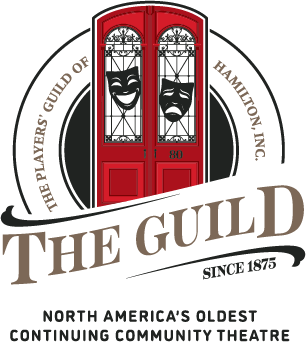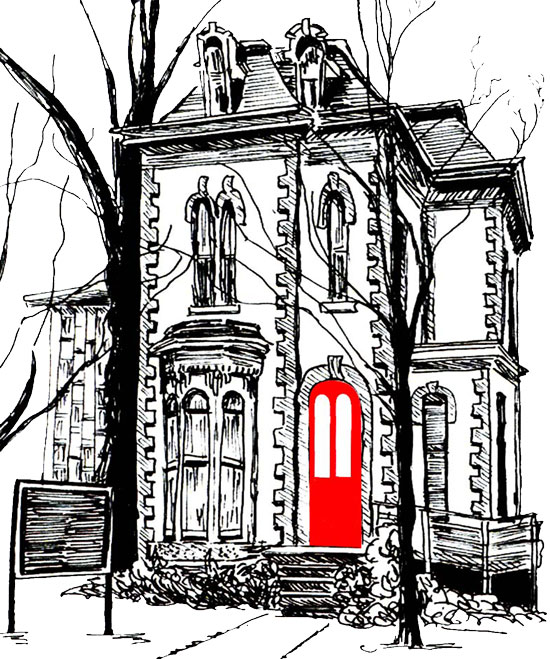The land where the Guild House now stands was originally a Crown Grant to Caleb Reynolds in 1796. He sold it in 1803 to Jean Baptiste Rousseau, whose widow sold it again in 1816 to James Mills and Peter Hess. The property consisted of all the land between Bay and Locke Streets, and between the Mountain and the Bay. On June 24, 1816, the two owners divided the property in half, and James Mills retained the portion west of Queen Street, about 240 acres. When he died in 1852, his son, James Nelson Mills inherited the property. He began erecting low-cost housing on the property.
On January 5, 1876, Nelson Mills was attacked and stabbed 8 or 9 times by a market butcher, Michael McConnell, whose goods had been attached by Mills for non-payment of rent. He had been withholding the rent ($14.00) to try to force the landlord to make some much-needed repairs. Nelson Mills died on January 9, 1876.
By 7:30 that evening a jury had been sworn in and had gathered at Palm’s Saloon at the corner of King & Bay Streets (where the George Hamilton restaurant is now). The coroner’s jury found cause to send Michael McConnell to court on a charge of murder. McConnell was defended by John Crerar (coincidentally, one of the founders of the Garrick Club) who had him plead insanity, one of the first times this defence was used in Canada. Several expert witnesses supported this defence, but he was found guilty and sentenced to death. He was executed by hanging on March 14, 1876, at the old Barton Street Jail.
Mills’ widow sold the lot to Valancey E. Fuller, a local lawyer and the son of Thomas Brock Fuller, the first Bishop of Niagara. Bishop Fuller lived nearby in the house where CHCH-TV is now.


